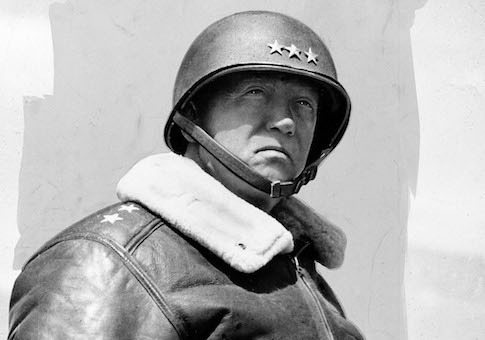The Army is changing the rules for one of its last remaining officers’ clubs to be more "inclusive," opening membership at the storied Fort Myer watering hole to service members of any rank.
The commander of the instillation, which neighbors Arlington National Cemetery and is known officially as Joint Base Myer-Henderson Hall, cited George S. Patton, the famed general who carried ivory-handled pistols, was independently wealthy, and who spoke French, in opening up the elite club to enlisted men.
"Beginning Thursday, Sept. 1, service members of any rank or military branch will be able to dine at the historic club and will be eligible to apply for membership," according to an Army news bulletin.
The club’s name, Fort Myer’s Officers’ Club or "O Club" for short, will also be changed, and the Army is taking suggestions from service members.
"Membership at the club is currently for active and retired commissioned officers of the U.S. armed forces and DoD civilians of a corresponding pay grade; the ‘all ranks’ club will be open to any active duty or retired members of the military, family members and federal civilian employees and contractors," the news bulletin said.
The base commander, Col. Patrick Duggan, said Patton, who was stationed at Fort Myer four times, would approve of officers socializing with enlisted men and women at the social club, and said the values at the base "have changed."
"What made Patton unique and ahead of his time was his unwavering trust of advocacy of U.S. Army Soldiers," Duggan said. "Patton believed any well-trained Soldier, regardless of rank, could have monumental impacts in modern-day mechanized battle."
"Patton believed in Soldiers, not rank," he said.
Patton was known for slapping and cursing lower-ranking soldiers during World War II.
The joint base said the new policy for the O Club will be "inclusive."
"Duggan also said the new, inclusive membership policy would provide opportunities for different generations of service members to build relationships and share insight; for retirees and veterans to ‘impart their knowledge and lessons to a younger generation,’" according to the news bulletin.
"There’s a hunger for it," Duggan said. "This is a good opportunity for them to connect. Why throw that away?"
The Fort Meyer Officers’ Club is a "spacious and elegant" facility with four pools as well as tennis courts. The club sticks to a strict dress code of neat causal attire, a coat and tie for the main dining room, and no jeans allowed.
The move to open the historic club to all ranks is the latest development in the decline in the time-honored tradition of gentlemen’s clubs for ranking officers.
Officers’ clubs have been said to be "instrumental in creating esprit de corps and camaraderie," and a way to "offer benefits and prestige to often low-paid officers."
But the clubs have slowly been phased out. In the 1970s the Army boasted 100 officers’ clubs. By 2009, there were only seven remaining.
Many of the remaining clubs have already been changed to allow membership for all ranks.
Ft. Belvoir still has an officers’ club, but it is open to all ranks and DoD personnel, and the Fightertown Beaufort Officers’ Club in South Carolina is open to military and civilians of all ranks for lunch. The Yokota Air Base Officers’ Club in Tokyo is also open to all ranks for lunch and dinner.
Membership at the Naval Academy officers’ club is still reserved only for commissioned officers and for higher-ranking federal employees.
UPDATE 5:25 P.M.: An earlier version of this post described General Patton's pistols as "pearl-handled." The handles were made of ivory.
